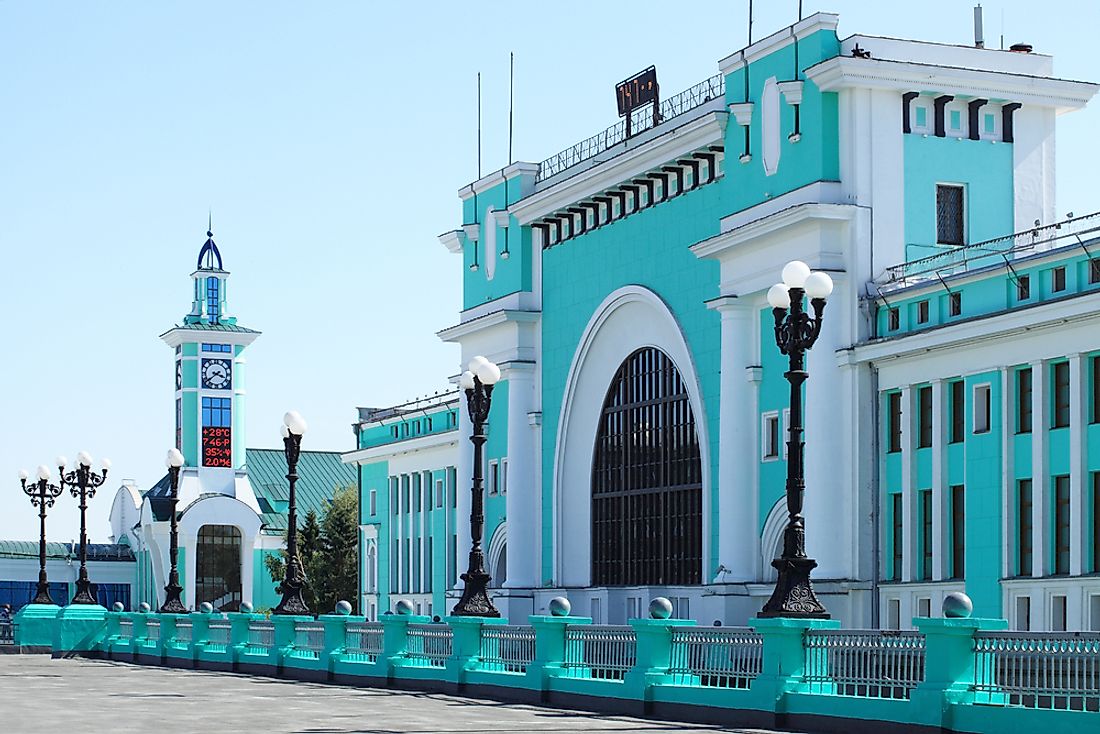The Largest Cities in Siberia

Siberia is a vast geographical region that accounts for 77% of Russia's land area and 27% of its population. Siberia, which is also known as North Asia, has been a part of the nation of Russia since the 17th century. The Siberian territory stretches from the Ural Mountains to the drainage divide between the Arctic and Pacific Oceans. The region also extends from the Arctic Ocean to the north-central hills of Kazakhstan to include the national borders of both China and Mongolia. Siberia has an area of 5,100,000 square miles and is home to approximately 40 million inhabitants. With about 7.8 inhabitants per square mile, Siberia is one of the most sparsely populated regions in the world.
The Largest Siberian Cities
Of the 12 largest cities in Siberia, Novosibirsk tops the list with almost 1.5 million inhabitants while Tomsk is at the bottom of the list with a little over half a million inhabitants according to the 2010 Census. Only the top three cities mentioned above comprise of a million and over inhabitants whereas half of the list consists of cities with half a million people. The other large cities in Siberia include Krasnoyarsk, Barnaul, Vladivostok, Irkutsk, Tyumen, Khabarovsk, Novokuznetsk and Kemerovo. Below are the top three leading cities in Siberia regarding population.
Novosibirsk
With a population of 1,473,754 according to the 2010 Census, Novosibirsk is the largest city in Siberia. Novosibirsk is the third largest city by population in Russia behind Moscow and St. Petersburg. The city is the administrative center of both the Siberian Federal District and Novosibirsk Oblast ("oblast" is a name given to an administration region in Russia). Novosibirsk is situated on the Ob River banks next to the Ob River Valley in the southwestern region of Siberia. The city is also near a large water reservoir created by the dam which supports the Novosibirsk Hydro Power Plant. Novosibirsk covers an area of 193.9 square miles and is divided into ten districts. Novosibirsk was founded in 1893 and attained its city status on January 10, 1904.
Omsk
Located in the southwestern region of Siberia about 1,389 miles from the city of Moscow is Omsk the administrative center of Omsk Oblast, Russia. Omsk has a population of 1,154,116 inhabitants making it the second largest city in Siberia behind only Novosibirsk. On a national level, Omsk is the seventh largest city by size. Omsk was founded on August 2, 1716 but attained its city status in 1782.
Chelyabinsk
Chelyabinsk is the third largest city in Siberia behind Novosibirsk and Omsk with 1,130,132 inhabitants according to the 2010 Census. The city is located on the border of Europe and Asia about 130 miles to the south of Yekaterinburg, on the Miass River just east of the Ural Mountains. The city is also the administrative center of Chelyabinsk Oblast, Russia. Chelyabinsk was founded in 1736 attaining its city status in 1787.
A Brief History Of Siberia's Cities
Most cities in Siberia started to appear as a result of the Russians tsars' decrees. The cities that were established in places with beneficial industry, trade, and defense characteristics began to flourish. The growth of cities in Siberia was attributed to population and was majorly supported by economic factors.
The Largest Cities in Siberia
| Rank | City Name | Population (2010 Census) |
|---|---|---|
| 1 | Novosibirsk | 1,473,754 |
| 2 | Omsk | 1,154,116 |
| 3 | Chelyabinsk | 1,130,132 |
| 4 | Krasnoyarsk | 973,826 |
| 5 | Barnaul | 612,401 |
| 6 | Vladivostok | 606,653 |
| 7 | Irkutsk | 587,891 |
| 8 | Tyumen | 581,907 |
| 9 | Khabarovsk | 577,441 |
| 10 | Novokuznetsk | 547,904 |
| 11 | Kemerovo | 532,981 |
| 12 | Tomsk | 524,669 |







